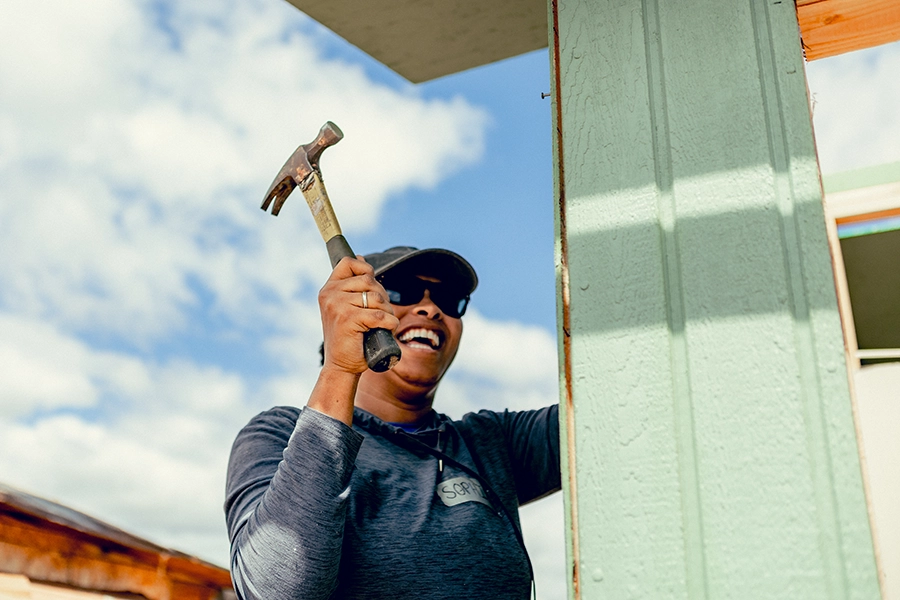Alfred Sloan, who became CEO of General Motors in the 1920s, is said to have coined a phrase that has become management lore: “I propose we postpone further discussion of this matter until the next meeting to give ourselves time to develop disagreement, and perhaps gain some understanding of what the decision is all about.”
The notion that innovation is most likely to come from deep exploration of those points of disagreement is almost a century old. Now, though, recruiters and managers have coined a term for this kind of variety: thought diversity.

Thought diversity is often the result of other types of diversity because the way we think is shaped by the cultures and experiences we’ve lived. It also has to do with the way we work.
Conversations between big-picture “idea people” and detail-oriented, analytical ones will produce far more robust projects than one or the other could do alone.
“Diversity of thought goes beyond the affirmation of equality—simply recognizing differences and responding to them,” Deloitte researchers wrote in a 2013 study. “Instead, the focus is on realizing the full potential of people, and in turn the organization, by acknowledging and appreciating the potential promise of each person’s unique perspective and different way of thinking.”
What is Thought Diversity?
A workplace that values diversity of thought is one that makes it possible for people with a variety of ways of thinking to contribute to projects together. That includes people who are analytical as well as imaginative, and organized as well as highly creative—“cognitive diversity.”
These kinds of teams may feel counter-intuitive, at least at first. It might not strike you to pair two employees with highly different habits or cultural backgrounds, and it may take them a little longer to work through those differences and produce results. However, leaders are increasingly agreeing that a diverse workforce yields more innovation and is all-around higher performing than a homogenous one is.
The Center for Talent Innovation breaks diversity into two categories:
- Inherent diversity, which describes the characteristics we traditionally think of when we think about diversity.
- Acquired diversity, which also weighs a person’s experience, such as where they grew up or were educated.
For example, a team that includes both prep school and community college graduates will approach problems differently—and probably create products relevant to a much wider audience—than a team made up entirely of Stanford graduates.
Ideally, CTI says, teams ought to have a healthy mix of both types of diversity to thrive. Companies with “two-dimensional diversity”—leaders who have both inherent and acquired diversity traits—were 45% more likely to report year-over-year market share growth than companies without it, according to a 2013 study.
The notion of two-dimensional diversity is important because diversity of thought is not an excuse for a lack of racial diversity or gender parity in the workplace, or even for maintaining the status quo. In fact, greater inherent diversity is a boon to leaders seeking greater thought diversity.
Thought Diversity in the Workplace
Implementing processes that celebrate thought diversity means opening yourself up to the idea that your way is not the best way.
Implementing procedures that celebrate and advance diversity of thought can be intimidating. For managers used to like-minded people, it means opening yourself up to being told you’re wrong, or that your way is not the best way.
Leaders would do well to understand that protecting company culture by claiming someone isn’t a “culture fit” might be another way of saying that a person is actually just different than yourself. Ridding yourself of bias or an aversion to individuals perceived as “different” will allow you to enhance your company’s culture.
Reordering day-to-day operations can improve thought diversity by making the workplace more accessible to a larger group of people.
It may also mean reordering your day-to-day operations. To retain employees with family obligations—an important type of acquired diversity, especially in sectors dominated by young workers—managers may need to offer remote work policies. Employees who work in different ways or at different times need to have the flexibility to do so.
A diverse workplace makes employees feel safe to express their perspectives and their needs.
Additionally, a workplace that promotes diversity of thought must be one that makes employees feel safe to express their perspectives and their needs. For example, companies that are serious about hiring people from underprivileged backgrounds should offer moving stipends and quick onboarding, recognizing that not every new hire has the resources to relocate or wait a month for their first paycheck. When leaders make employees with underrepresented experiences feel comfortable from the outset, they’ll be more likely to express opinions about a variety of topics.
When people aren’t afraid to express their ideas, leaders will hear a much wider variety of ideas from diverse teams—leading to increased awareness of changing market demands and the needs of a diverse customer base.
Ultimately, that’s what diversity of thought is all about: Your company culture might encourage people to think a certain way, but the real world is enormously diverse. What seems like an obvious need for one person might be entirely irrelevant to another.
Fostering Diversity of Thought in Your Workplace
Beyond that, they should establish an inclusive culture of open but respectful communication: Clearly telling employees what’s expected of them and explaining why you’ve established an unconventional team.
Employees in a workplace that values diversity should feel comfortable to talk about their own life experiences—and, indeed, to draw on those experiences in the context of work. Encourage employees to lean into their ways of thinking, not to conform to yours. Implement constructive peer-review policies that embolden team members rather than silence them. Seize opportunities to celebrate a wide variety of types of achievement and out-of-the-box thinking.
The most effective way to ensure that your company is fostering a diverse workforce starts with leaders expanding their own professional circle to include diversity in:
- Race
- Gender
- Sexual orientation
- Age
- Political affiliation
- Disabilities
- Geographic upbringing
- Socioeconomic status
- Education
Internal referrals are the most effective way to hire for diversity—expanding your personal and professional circles to include a diverse group of individuals ensures that you have connections to a variety of people that could later bring value to your company.
Finally, let employees learn from each other. When one person truly listens to other perspectives—respectfully and open to persuasion—they may just discover new ways of working. And together, they may come up with your best ideas yet.
Do you want to support recruiting a deeply diverse team? Are you ready to implement policies in your workplace that help advance an inclusive culture? We can help.
Our Predictive Index is designed to measure cognitive reasoning and ways of thinking, which can help hiring managers ensure thought diversity on growing teams. Reach out today to get started, and learn more about the topic by watching our video on Diversity of Thought.
TITUS INSIGHTS
Refreshing perspectives and practical expertise from the Titus team.
Committed To Radical Generosity
Our dedication to radical generosity keeps us focused on what matters most, and it allows us to make a trusted and lasting impact on the world around us. It’s the foundation of our culture and our partnerships.



